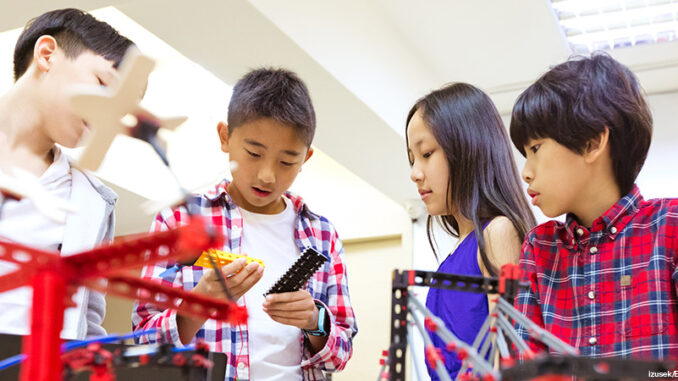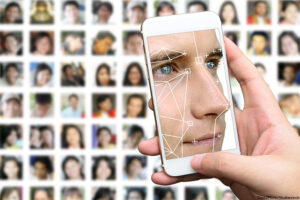
Reconsidering Facial Recognition Technology

Imagine that you are accused by law enforcement of a crime you didn’t commit. Imagine that the reason for your arrest is that you were misidentified by flawed facial recognition technology. Following the protests surrounding George Floyd’s death in Minneapolis, Democrats in Congress have been considering widespread police reform. One of the issues being looked at is facial recognition software. That is because this developing technology has known weaknesses in properly identifying non-white facial images. The darker a person’s skin, the higher the rates of inaccurate facial recognition results. This can lead to false arrests, cases of mistaken identity, and other violations of people’s rights and privacy. In a recent bill, Democrats have proposed limiting the ways that law enforcement can use this software, including imposing a ban on using facial recognition technology in conjunction with police body-worn cameras.
Private companies are also reconsidering their role in using, promoting, or selling the controversial software. IBM has announced that it won’t be producing any technology that violates human rights or encourages racial profiling in the United States. Microsoft refuses to sell its software to U.S. law enforcement altogether. Amazon’s facial recognition product, Rekognition, is a software package that allows a police officer to take a picture of someone’s face with his or her smartphone and then compare it to hundreds of thousands of mug shots online. It can even try to match a person based on their social media profile picture. Amazon has now agreed that it will stop selling the product to U.S. law enforcement for one year, giving Congress time to come up with plans to regulate the software better. While human rights and racial equality groups agree that a year-long halt is a step in the right direction, most have called for an all-out ban of all facial recognition technology.
Dig Deeper Some U.S. law enforcement officials argue that facial recognition software can help people and even save lives. Use Internet resources to help you write a short paragraph about some of the positive uses of this technology.
Schools: To Reopen or Not to Reopen
You probably have some pretty strong feelings about whether you want to return to school in the fall. When it comes to reopening schools, there are a lot of important factors to consider, such as cost and safety. Last week, the United States Senate’s Education Committee began to tackle that very question in the first of what will likely be many discussions about what the best next steps may be.
On the one hand, re-opening schools will cost a huge amount of money. There are also safety factors to consider: even though children haven’t been the prime segment of the population affected by the disease, there are concerns that they can still be carriers. Schools are considering precautions such as hiring additional cleaning staff and providing masks, gloves, and hand sanitizer to teachers and students. All of these extra precautions will likely cost the average school district a large amount of money at a time when many states have cut their education budgets significantly.
But on the other hand, keeping children out of school poses other major problems. Without school, working parents may need to secure full-time childcare. And in addition to the loss of valuable instruction time, children who are at-risk also may lose access to many of the health benefits schools provide, such as meals and a safe environment.
So what about distance learning? Probably the most likely scenario for fall will be that most students will experience some mix of distance-learning and in-person classes. But online learning presents its own challenges, such as ensuring that every single student has a computer and reliable Internet access.
What Do You Think? Imagine that you are the superintendent of a school district, in charge of determining your district’s reopening plans for fall. Would you be in favor of distance learning, in-person learning, or some blend of the two? Explain.
Former Astronaut Dives Deep
Quick: who was the first U.S. woman to walk in space? If you answered Kathy Sullivan, you’re correct! (Her spacewalk happened in 1984.) But now, she is not only the first woman to walk in space, she is also the first woman to go in the opposite direction: to the very bottom of the ocean.
Challenger Deep, located in the Pacific Ocean, is the deepest point on Earth. In fact, it is located nearly seven miles (roughly 11,000 feet) beneath the surface of the water, in the Mariana Trench near Guam. To give you a better sense of what that looks like: Challenger Deep is deeper than Mount Everest is tall. As a matter of fact, it’s so deep that only seven people had ever reached it before Sullivan. What made her the perfect candidate for the journey was that she is both an astronaut and an oceanographer. After completing three shuttle missions for NASA, she became the administrator of the National Oceanic and Atmospheric Administration.
The ocean remains the last great unexplored territory in the world. To date, only about half of the deep-sea floor has been mapped. (And in case you’re wondering what it’s like at the deepest place on Earth . . . in 2019, diver Victor Vescovo discovered four new life species at the bottom–but also a plastic bag and several candy wrappers.)
Dig Deeper Why is the deepest spot on Earth named Challenger Deep? Use Internet resources to help you determine your answer.
A Simplified Olympics?
Chances are, you’ve probably watched at least parts of the Summer Olympics on television before. But have you ever really thought about how much work (and money) goes into producing them? These athletic contests are incredibly complicated. In 2016, for example, more than 11,000 athletes from more than two hundred teams participated in the Summer Olympics (held that year in Rio de Janeiro, Brazil). It’s also remarkably expensive: host cities spend millions of dollars on infrastructure, such as new stadiums and athletic venues, to accommodate the Games. This year, an added complication has been the worldwide COVID-19 pandemic, which has pushed back the upcoming Tokyo Olympics by one year (until July 2021). The delay will cost Japan between $2 billion and $6 billion. About $800 million of this will be covered by the International Olympic Committee. But even so, Japan’s organizing committee has asked that the International Olympic Committee consider ways to simplify the Games and involve fewer athletes in 2021. This will both reduce the cost and make it safer for athletes by limiting their potential exposure to COVID-19.
Exactly how this might happen hasn’t been revealed yet, though the organizers have already identified more than 200 issues that they could possibly address. Additional safety features could include mandatory coronavirus testing, quarantining athletes, and limiting the number of spectators. Plans will be finalized via a virtual meeting on July 17.
